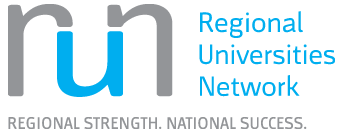Science backs traditional medicine with native Gumbi Gumbi discoveries
A groundbreaking study of a native Australian plant has revealed promising antioxidant and cancer-fighting properties, supporting generations of First Nations healthcare tradition.
CQUniversity’s Bioactive and Functional Foods Research Group worked with Woorabinda-based Ghungalu leaders, to investigate traditional medicine tree Gumbi Gumbi, or Pittosporum angustifolium.
Funded via CQUniversity’s BHP Chair in Indigenous Engagement since 2021, the ongoing research has published initial findings about the chemical makeup of the leaves and fruit, highlighting potent antioxidants and promising cytotoxicity against cancer cells.
Science academic Dr Mani Naiker led the project with Ghungalu Elder Uncle Steve Kemp, who provided some of the Gumbi Gumbi samples from across the Traditional Lands of the Ghungalu people.
Research team representatives shared the findings at a CQUniversity workshop on Tuesday 25 June 2024, highlighting long-known benefits of Australian Indigenous foods and medicine, and potential for more widespread use.
Gumbi Gumbi is traditionally used to treat everything from cancer and high blood pressure to diabetes and dandruff, and Uncle Steve first learned about the plant from his father.
“We’d be cruising down the highway and Dad would point out the window and say, ‘that there, that’s medicine’ – and he knew not just from the species of tree, but also the fall of the land and the colour of the soil, and how that would make the plant more potent,” he explained.
“Now CQUniversity’s research has proved all Dad’s theories about Gumbi Gumbi – and we’ve still got a lot to research about other native medicine too.
“These findings are going to benefit everyone: people who could use these treatments, and the community at Woorabinda, knowing this knowledge comes from our People.”
Uncle Steve has been working with Gumbi Gumbi for more than three decades.
“I know from the Elders, when we look for medicine, we see it, we feel it, we taste it, we look at the surroundings – and that’s how we know it’s the right one,” he explained.
The Indigenous plant is found across mainland Australia and is known by a range of local names.
Dr Naiker said CQUniversity’s new native plant hub at the Central Queensland Innovation and Research Precinct (CQIRP) is also growing Gumbi Gumbi trees, and research will continue into leaf and fruit benefits, with clinical trials into its cancer-fighting potential.
“Currently, our group is also developing methods for sugar content analysis and glycaemic response in its makeup, to explore potential for natural blood sugar control methods,” Dr Naiker explained.
The Bioactive and Functional Foods Research Group advocate is also doing further analysis on how harvest time and drying methods impact potency.
CQU researchers also have ongoing projects assessing properties and uses for Native Australian ginger, Burdekin plums, tuckeroo, and native chillies, in partnerships with Native Plants Capricornia, Rockhampton Regional Council's Native Plant Program, and other local growers.
Other Native Foods: Unveiling Commercial Value Opportunities workshop speakers brought expertise in small to medium enterprise opportunities, including members of Uncle Steve’s Yarbun Creations Indigenous business, Mark Tucek of Tucker Bush, Ryan Anderson from Henderson Park on Hedlow Creek, Director of Tropical North Queensland Drought Resilience Adoption at James Cook University’s Innovation Hub Professor David Phelps, and Neil Hoy from Central Queensland Native Plants.
Dr Naiker said the workshop attracted a broad range of growers, business people, investors, and interested locals.
“This was a unique opportunity to explore the myriad benefits of investing in these Indigenous resources," he said.
"We look forward to continuing to research and showcase their potential, not only within First Nations communities but also across wider demographics."
